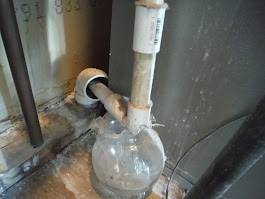Uncovering the Unexpected: Addressing 10 Common Home Inspection Problems with Professional Insights
- Tripp Walker
- Mar 27
- 3 min read
Home inspections can feel overwhelming for buyers and homeowners. You want your dream property, but uncovering hidden problems can make the process stressful. However, being informed is key. This article outlines ten common issues found during home inspections along with expert advice on how to tackle them successfully.
1. Roof Issues
Roofs protect your home from the elements. Common problems include missing shingles and leaks, all of which can lead to serious damage. For instance, about 20% of homeowners face issues related to roof leaks shortly after purchase.
To tackle roof problems, hire a qualified roofing contractor to inspect your roof's condition. Regular maintenance, like cleaning gutters and checking for missing shingles, can double the lifespan of your roof.
2. Plumbing Problems
Leaky faucets, slow drains, and old pipes are frequent plumbing concerns. For instance, leaks can cause an increase in water bills by up to 10%, leading to potential water damage and mold growth.
For small leaks, DIY fixes may work. However, more significant plumbing issues require a licensed plumber. Conducting annual inspections can help catch plumbing issues before they escalate.
3. Electrical System Deficiencies
Outdated electrical systems can be dangerous. Common problems include insufficient outlets, outdated wiring, and exposed wires. More than 30,000 home fires each year are caused by electrical issues.
To safely resolve these deficiencies, consult a licensed electrician. Upgrading your system not only improves safety but can save you up to 20% on your energy bills by optimizing energy efficiency.
4. HVAC Problems
Heating, Ventilation, and Air Conditioning (HVAC) systems keep your home comfortable. Common issues include dirty filters and aging equipment. Statistics show that regular maintenance can extend HVAC systems' lifespan by over 15 years.
Change filters monthly and schedule a professional inspection annually. When upgrading, consider Energy Star-rated units, which can lower your energy bills significantly.
5. Foundation Cracks
Foundation cracks might signal major structural concerns. While minor settling cracks are often harmless, significant cracks can threaten the overall stability of your home.
Addressing these cracks quickly is essential. For small issues, sealing the cracks may suffice. Consulting a structural engineer for serious problems can save you from costly repairs long-term.
6. Pest Infestations
Pests like termites and rodents can inflict damage and health risks. In fact, termites alone cause more than $5 billion in property damage in the U.S. each year.
To tackle pest problems, hire a pest control expert for a full assessment. Implementing regular inspections and maintaining cleanliness can prevent infestations from starting in the first place.
7. Poor Drainage
Improper drainage can lead to water accumulation and risk of flooding. Many homes suffer issues from clogged gutters or poor landscaping, potentially leading to thousands of dollars in repairs.
To fix drainage problems, clean your gutters regularly and ensure downspouts direct water away from the foundation. Adjusting your landscaping to encourage water flow can make a big difference.
8. Windows and Doors
Inefficient windows and doors can lead to discomfort and higher energy costs. Drafty windows can increase heating and cooling expenses by up to 25%.
Replacing old windows and doors with energy-efficient models can improve comfort and utility savings. Regular maintenance, such as checking seals, can help extend their life and efficiency.
9. Age of Appliances
Old appliances can be inefficient and hazardous. It is vital to assess their age during a home inspection. For instance, an outdated refrigerator can consume 50% more energy than a new model.
Consider replacing appliances older than ten years with modern, energy-efficient options. This investment can lower your utility bills and enhance safety in your home.
10. Mold Growth
Mold often arises in damp areas such as bathrooms and basements. It poses both health risks and property damage concerns. Studies show that mold can develop within 24 hours in a moist environment.
If you discover mold, first address the source of moisture. Then, consult a professional mold remediation service to ensure safe and thorough removal.
Final Thoughts
Navigating homeownership can reveal unexpected challenges, particularly during inspections. By understanding these common issues and how to fix them, homeowners can make informed choices about repairs and maintenance. Regular upkeep and timely interventions can protect your investment and enhance your living space. Stay proactive and approach homeownership confidently!








Comments